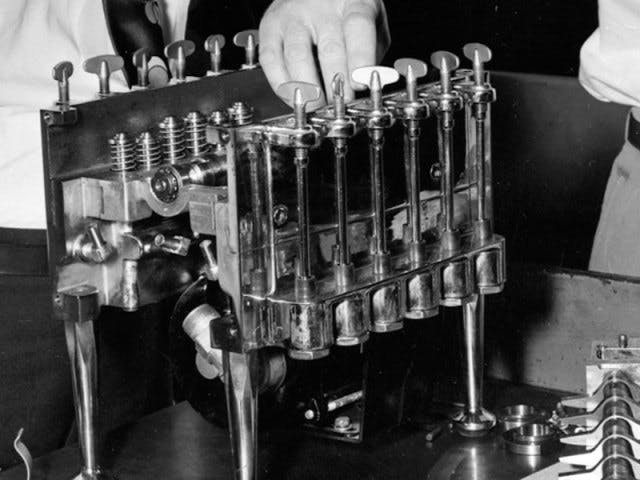
General Motors, the biggest of the “Big Three” auto companies, has had a long business history. Over the course of the business and the country’s history in the last 100 years, there have been a number of historic events in which GM and Chevrolet have played a significant part. Over the next five days, we will bring you five of history’s biggest events that you probably didn’t know that GM was involved in. Today’s history lesson involves the field of medicine – in particular, open heart surgery. Here’s what you probably didn’t know about GM’s involvement in open heart surgery:

General Motors has made significant contributions to society extending far beyond the automobile industry, with one of those important contributions being the development of the first mechanical heart pump in 1952.
Dr. Forest Dodrill was a surgeon at Wayne State University’s Harper Hospital in Detroit. He believed that a machine could be developed that would temporarily replace the human heart’s blood-pumping function and make open heart surgery possible. Dr. Dodrill and his medical team called on a group of scientists and engineers at the GM Research Laboratories for help.
This unique collaboration between Automotive Engineers and Medical researchers resulted in the Dodrill-GMR Mechanical Heart, built by GM Research Laboratories in the public interest and funded in part by the American Heart Association. The pump measuring 10-inches by 12-inches by 17-inches, and looked similar to a 12-cylinder engine with six separate chambers. Made from a combination of stainless steel, glass and rubber, the mechanical heart used air pressure and vacuum pumps to circulate blood from the unit’s chambers through the patient’s body while open heart surgery was being performed.

Dr. Dodrill used the machine on July 3, 1952, to bypass 41-year-old Henry Opitek (January 6, 1911-March 1981) left ventricle for 50 minutes while he opened the patient’s left atrium and worked to repair the mitral valve. The entire operation lasted 80 minutes. Opitek went on to live another 29 years with his repaired heart. It’s estimated that worldwide more than one million open heart operations are done using some form of heart-lung machine each year. The success of the Dodrill-GMR Mechanical Heart began a wave of research and medical advances that continue to this day and without which, many of the heart operations that are routinely done would not be possible.
You might also like
Dakota Digital RTX: Modern Technology Built For The OBS Era
Dakota Digital RTX brings modern tech, custom lighting, and advanced data to any OBS truck while preserving a factory-correct look.


